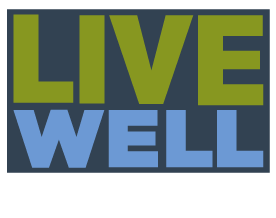Promising Practices
The Promising Practices database informs professionals and community members about documented approaches to improving community health and quality of life.
The ultimate goal is to support the systematic adoption, implementation, and evaluation of successful programs, practices, and policy changes. The database provides carefully reviewed, documented, and ranked practices that range from good ideas to evidence-based practices.
Learn more about the ranking methodology.
Filed under Evidence-Based Practice, Health / Cancer, Women, Men, Racial/Ethnic Minorities, Urban
Goal: The goal of this intervention was to increase colorectal cancer screening among an Asian American population.
Impact: A multicomponent intervention, including an educational session, can increase colorectal screening rates among Filipino Americans, even without the distribution of free fecal occult blood test kits.
Filed under Evidence-Based Practice, Health / Alcohol & Drug Use
Goal: To reduce drug abuse and increase positive mental and physical health outcomes among college students ages 18-25 years old.
Impact: Tailored health and wellness interventions may reduce risk factors facing college students, while perhaps improving their health-related quality of life.
Filed under Evidence-Based Practice, Health / Women's Health, Women
Goal: The goal of Insights is to increase condom use among young women at risk for HIV and other STDs.
Impact: Insights proves that tailored cognitive/behavioral minimal self-help interventions hold promise as HIV/STD prevention strategies for diverse populations of young at-risk women.
Integrating Community Service with Higher Education Student Government Programming (Sonoma County, CA)
Filed under Good Idea, Community / Civic Engagement, Teens
Goal: The goal is to integrate community service programs at colleges and universities into the programming objectives of student government organizations in order to achieve greater student involvement and more stable funding.
Filed under Effective Practice, Health / Family Planning, Women
Goal: The goal of this program is to provide reproductive health care services to women and men in the Denver STD clinic.
Impact: Enrollment in family planning services increased significantly. Among women returning within 12 months, pregnancies were lower among enrolled versus non-enrolled women. Total additional cost was $29.95/visit, and 40.1 minutes of additional staff time.
Filed under Evidence-Based Practice, Health / Physical Activity, Children, Families
Goal: To decrease saturated fat consumption and thus reduce coronary heart disease risk factors in young children.
Impact: STRIP's intervention of diet counseling that began at a child's infancy favorably impacted the child's diet through childhood up to ages 8 or 10, but the goal of 2:1 unsaturated-saturated fatty acid ratio in a child's diet was not met for either intervention or control group.
Filed under Effective Practice, Economy / Housing & Homes, Children, Adults, Families, Urban
Goal: Isles' mission is to foster more self-reliant families in healthy, sustainable communities.
Filed under Evidence-Based Practice, Health / Alcohol & Drug Use, Women, Urban
Goal: The goal of IT'S TIME is to help women of child-bearing age quit smoking.
Impact: The IT'S TIME program succeeded in helping women quit smoking.
Filed under Evidence-Based Practice, Health / Adolescent Health, Teens
Goal: The goal of It's Your Game: Keep It Real is to reduce teen pregnancy, prevent STI transmission, and delay teen sexual activity in middle school students.
Impact: Participants in the It’s Your Game: Keep It Real intervention program were less likely to initiate sex by the ninth grade when compared to the control group.
Filed under Evidence-Based Practice, Education / Literacy, Children
Goal: The goal of Itchy's Alphabet is to help children improve their literacy levels.

